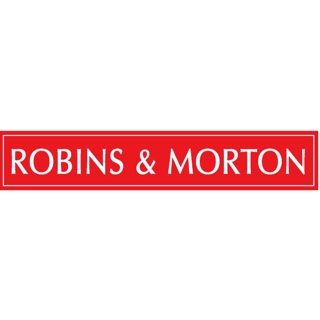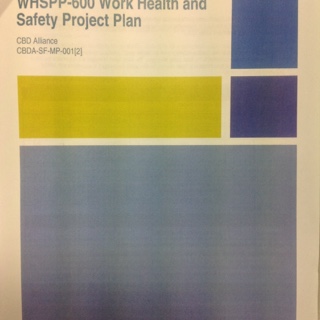Information
-
Document No.
-
Client / Site
-
Prepared by
-
Select date
-
Comments
ILSM & Administration
1.0 Interim Life Safety Measures
-
Conduct ILSM Audit
-
1.1 Exit clear, signs, egress route<br>
-
1.2 Exterior Access<br>
-
1.3 Fire Alarm/suppression<br>
-
1.4 Temp walls, signs<br>
-
1.5 Fire extinguishers unobstructed, inspections current <br>
-
1.6 No Smoking rule or designated smoking areas<br>
-
1.7 Storage & housekeeping adequate <br>
-
1.8 Hot work operations by permit<br>
-
1.9 ILSMs current<br>
-
1.10 Other ILSM
-
Conduct Infection Control Audit
-
1.1 Infection Control Risk Assessment (ICRA) completed/documented
-
1.2 ICRA/Permit posted
-
1.3 Dust Controls (HEPA, NAM, Scrubbers)
-
1.4 Temp walls, signsHoles, conduits, pipes and punctures sealed appropriately
-
1.5 Negative air pressure maintained/monitored
-
1.6 Work area isolated
-
1.7 Ductwork/air returns sealed
-
1.8 Material carts covered/wiped down
-
1.9 Tack mats in use and monitored
-
1.10 Continuous cleanup accomplished
-
1.11 Wet mop as necessary
-
1.12 HEPA Vacuum utilized
-
1.13 Area cleaned by HOST Environmental Services
-
1.14 Barriers remain until inspected by HOST Safety Infection Control Manager
-
1.15 Other ICRA
2.0 Administration
-
Conduct Administrative Audit
-
2.1 Document pre construction meetings<br>
-
2.2 Freq/reg safety inspections<br>
-
2.3 JHA submitted each trade<br>
-
2.4 MSDS manual<br>
-
2.5 OSHA 10 hr cert sub on site<br>
-
2.6 OSHA posters/OSHA 300 log<br>
-
2.7 Safety Manual<br>
-
2.8 Safety Meetings<br>
-
2.9 Tool Box talks<br>
-
2.10 Orientations process completed<br>
-
2.11 State/Fed posters (eng/sp)<br>
-
2.12 Visitor PPE<br>
-
2.13 Visitor sign in<br>
-
2.14 Exit signs posted<br>
-
2.15 Other Administrative
Confined Space
3.0 Confined Space
-
Conduct Confined Space Audit
-
3.1 Atmospheric Conditions<br>
-
3.2 Comm/secure area/signage<br>
-
3.3 Entry super/monitor/entrant<br>
-
3.4 Harness/extraction equip<br>
-
3.5 Permit required<br>
-
3.6 Regular Insp/air monitor<br>
-
3.7 Rescue plan/emerg #'s/map<br>
-
3.8 Respiratory Equipment<br>
-
3.9 Safety person/rescue equip/PPE<br>
-
3.10 Training documentation<br>
-
3.11 Ventilation<br>
-
3.12 Other confined space
Cranes & Lifting Devices
4.0 Cranes & Hoisting Equipment - 29 CFR 1926 Subpart CC - OSM 415
-
Conduct Crane & Hoisting Equipment Audit
-
4.1 Annual Inspection current<br>
-
4.2 Anti two block device as required<br>
-
4.3 Boom angle indicator functional<br>
-
4.4 Operator properly certified or verify training<br>
-
4.5 Crane supported & level<br>
-
4.6 Daily and Monthly inspection current<br>
-
4.7 Safe distance to power lines maintained or lines De-energized / insulated<br>
-
4.8 Fire extinguisher in crane<br>
-
4.9 Flagman / Signalman & Rigger identified <br>
-
4.10 Lift plan on file if required<br>
-
4.11 Load chart posted<br>
-
4.12 Loads properly secured<br>
-
4.13 Means of communication<br>
-
4.14 Operator appears competent<br>
-
4.15 Operator manual in crane<br>
-
4.16 Out riggers fully extended and proper cribbing<br>
-
4.17 Rigging equipment inspected and rated for load<br>
-
4.18 Safety latches used<br>
-
4.19 Swing radius barricaded<br>
-
4.20 Tag lines used<br>
-
4.21 Weight of load verified<br>
-
4.22 Other Crane / Hoisting
Electrical
5.0 Electrical - 29 CFR 1926 Subpart K - OSM 430
-
Conduct Electrical Audit
-
5.1 Cords in good condition<br>
-
5.2 Cords protected from traffic<br>
-
5.3 Energized Work Procedures<br>
-
5.4 Electrical work protected<br>
-
5.5 Energized parts protected<br>
-
5.6 GFCI's inspected and used<br>
-
5.7 LO/TO procedures<br>
-
5.8 Proper use of temp power bxs<br>
-
5.9 Signage present<br>
-
5.10 Proper temp lighting<br>
-
5.11 Other Electrical
Environmental
6.0 Environmental
-
Conduct Environmental Audit
-
6.1 Asbestos/Lead areas located<br>
-
6.2 Concrete cut wet / vacuumed <br>
-
6.3 Containers labeled<br>
-
6.4 Hazardous materials properly stored / storage signage as required<br>
-
6.5 Nuisance dust<br>
-
6.6 Spill containment adequate<br>
-
6.7 Other Environmental
Excavations
7.0 Excavations - 29 CFR 1926 Subpart P - OSM 435
-
Conduct Excavation Audit
-
7.1 Ladder Access every 25'<br>
-
7.2 Competent person present<br>
-
7.3 Daily inspections doc<br>
-
7.4 Excavtion >20' engineered<br>
-
7.5 One Call or Utility locate system used<br>
-
7.6 Perimeter protected/barricaded<br>
-
7.7 Sloped, benched or shored, engineered<br>
-
7.8 Spoil 2' from edge<br>
-
7.9 Surface encumbrances<br>
-
7.10 Surface traffic exposures<br>
-
7.11 Water entering excavation removed<br>
-
7.12 Other excavation
Fall Protection
8.0 Fall Protection - 29 CFR 1926 Subpart M - OSM 440
-
Conduct Fall Protection Audit
-
8.1 Perimeter Protection /Ext/Int guardrails<br>
-
8.2 Fall protection/prevention at 6'<br>
-
8.3 Floor/Wall openings protected<br>
-
8.4 Floor covers adequate, secured & label<br>
-
8.5 Proper anchorage points<br>
-
8.6 Roof edge protected<br>
-
8.7 Safety harness and lanyard<br>
-
8.8 Stair/ramp/walkway protection<br>
-
8.9 Acceptable Fall Plan submitted<br>
-
8.10 Other Fall Protection
Fire Protection
9.0 Fire Protection - 29 CFR 1926 Subpart F - OSM 450
-
Conduct Fire Protection Audit
-
9.1 Emergency vehicle access<br>
-
9.2 Extinguisher charged and inspected<br>
-
9.3 Fire suppression equip available<br>
-
9.4 Fire watch when applicable<br>
-
9.5 Proper signage in storage area<br>
-
9.6 Monthly extinguisher inspection<br><br>
-
9.7 Rescue plan/emergency numbers and map <br>
-
9.10 Training documentation<br>
-
9.11 Other Fire Protection
Hand & Power Tools
10.0 Hand & Power Tools - 29 CFR 1926 Subpart I - OSM 470
-
Conduct Hand & Power Tool Audit
-
10.1 Cord in good condition<br>
-
10.2 Ground prong in place<br>
-
10.3 Guards in place<br>
-
10.4 Information label on tool<br>
-
10.5 Proper tool for the job<br>
-
10.6 Strain relief functioning<br>
-
10.7 Tool used properly<br>
-
10.8 Anti-whip attachments installed<br>
-
10.9 Auto shut off/safety switches<br>
-
10.10 Powder actuated tool used proper<br>
-
10.11 Powder actuated shots disposed properly<br>
-
10.12 Other hand/power tool
Hazard Communication
Hazard Communication - 29 CFR 1926.59 - 29 CFR 1910.1200
-
Conduct HazCom Audit
-
11.1 Copy of written program<br>
-
11.2 Employees Trained<br>
-
11.3 Inventory List<br>
-
11.4 SDS (site specific)<br>
-
11.5 Proper labels on containers<br>
-
11.6 SDS's Readily Available and easily accessible<br>
-
11.7 Other HazCom
Housekeeping
12.0 Housekeeping - 29 CFR 1926.25
-
Conduct Housekeeping Audit
-
12.1 Clear access to building / site<br>
-
12.2 Designated employee parking<br>
-
12.3 Impalement protection<br>
-
12.4 Proper material storage<br>
-
12.5 Roadway around project clear<br>
-
12.6 Slip, trip, fall hazards<br>
-
12.7 Trash in protected containers<br>
-
12.8 Walkways clear<br>
-
12.9 Other Housekeeping
Ladders & Stairs
13.0 Ladders 29 CFR 1926 Subpart X - OSM 495 / Stairs (OSM 550)
-
Conduct Ladder / Stairs Audit
-
13.1 Ladder 3' above landing<br>
-
13.2 Ladder or stair access break >19"<br>
-
13.3 Landings clear of debris/material<br>
-
13.4 Extension ladder 4:1 pitch<br>
-
13.5 Inspected for defects<br>
-
13.6 Job-built ladders constructed properly<br>
-
13.7 Ladders properly secured<br>
-
13.8 Landings and treads filled<br>
-
13.9 Proper use of ladder<br>
-
13.10 Rails at stairs/landings<br>
-
13.11 Safe work distance from hazard<br>
-
13.12 Slip trip exposure eliminated<br>
-
13.13 Stairs illuminated<br>
-
13.14 Other Ladder/Stair
Medical & Emergency
14.0 Medical / Emergency
-
Conduct Medical / Emergency Audit<br>
-
14.1 First Aid Kit available <br>
-
14.2 First Aid / CPR qualified person on site<br>
-
14.3 Emergency numbers posted<br>
-
14.4 Eye wash available<br>
-
14.5 Directions to medical facility<br>
-
14.6 Project Emergency / Crisis / EAP<br>
-
14.7 Contact numbers avail.<br>
-
14.8 Other Medical
Motorized Equipment
15.0 Motorized Equipment - 29 CFR 1926 Subpart O -
-
Conduct Motorized Equipment Audit
-
15.1 Back up alarm functioning<br>
-
15.2 Flagman used if applicable<br>
-
15.3 Glass free of obstructions<br>
-
15.4 Horn functioning<br>
-
15.5 Operator appears competent<br>
-
15.6 Seat belts used<br>
-
15.7 Training documents available<br>
-
15.8 Other Motorized Vehicle
Personal Protection Equipment
16.0 PPE - 29 CFR 1926.95, Subpart E - OSM 520
-
Conduct PPE Audit
-
16.1 Safety Glasses
-
16.2 Face shield worn when required
-
16.3 Proper gloves for task being performed
-
16.4 Hard hat
-
16.5 Hearing Protection<br>
-
16.6 Metatarsal protection when appropriate<br>
-
16.7 Proper work clothing<br>
-
16.8 Rebar Caps<br>
-
16.9 Respirators<br>
-
16.10 High visibility outer attire<br>
-
16.11 Visitor PPE available<br>
-
16.12 Work Boots<br>
-
16.13 Other PPE
Scaffolds & Man Lifts
17.0 Scaffolds - 29 CFR 1926 Subpart L - OSM 535
-
Conduct Scaffold Audit
-
17.1 Bracing & pins in place<br>
-
17.2 Compatible components used<br>
-
17.3 Competent person present<br>
-
17.4 Guardrails in place<br>
-
17.5 Inspected daily<br>
-
17.6 Properly secured to structure<br>
-
17.7 Proper access to platforms<br>
-
17.8 Proper loading of materials<br>
-
17.9 Proper height to base ratio<br>
-
17.10 Safe work distances<br>
-
17.11 Sills, plates, jacks installed<br>
-
17.12 Surface in safe condition<br>
-
17.13 Wheels locked<br>
-
17.14 Outriggers installed<br>
-
17.15 Other Scaffold
Scaffolding Observation
-
Contractor
- 2-K Steel
- ABC Cutting
- All South Subcontractors, Inc.
- Automated Systems Design, Inc
- Brawco
- Durham Contracting, LLC
- Florida Glass of Tampa Bay
- Gant Concrete Pumping
- Gates Precast Company
- Goodman Deocrating Co, Inc.
- H&M Mechanical
- International Fire Protection
- Landscape Workshop
- Mac's Crane Service
- McDonald Brothers Construction
- Mortensen Woodword
- NS Water Proofing
- Robins & Morton
- Selective Masonry
- Shannon Brothers
- Skyline Forming and Affiliates
- Specon Systems, Inc.
- ThysenKrupp Elevator Corp
- Vickers Concrete Reinforcing, Inc
- Wells & Tate
- Wheeler Services, Inc.
- Moon Construction
-
Observation Details
-
Has deficiency been corrected?
-
Corrective Action Information
18.0 Scissor / Aerial lifts
-
Conduct Lift Audit
-
18.1 Equipment loaded properly<br>
-
18.2 Gate or chain secured<br>
-
18.3 Harness while in boom lifts<br>
-
18.4 Nothing to increase height<br>
-
18.5 Operating on flat surfaces<br>
-
18.6 Surface free of holes<br>
-
18.7 Daily/Shift inspection completed
-
18.9 Other scissor/aerial lift
Aerial/Scissor Lift Observation
-
- 2-K Steel
- ABC Cutting
- All South Subcontractors, Inc.
- Automated Systems Design, Inc
- Brawco
- Durham Contracting, LLC
- Florida Glass of Tampa Bay
- Gant Concrete Pumping
- Gates Precast Company
- Goodman Deocrating Co, Inc.
- H&M Mechanical
- International Fire Protection
- Landscape Workshop
- Mac's Crane Service
- McDonald Brothers Construction
- Mortensen Woodword
- NS Water Proofing
- Robins & Morton
- Selective Masonry
- Shannon Brothers
- Skyline Forming and Affiliates
- Specon Systems, Inc.
- ThysenKrupp Elevator Corp
- Vickers Concrete Reinforcing, Inc
- Wells & Tate
- Wheeler Services, Inc.
- Moon Construction
-
-
Has deficiency been corrected?
-
Corrective Action Information
Site Public Protection
19.0 Site Public Protection
-
Conduct Site Public Protection Audit<br>
-
19.1 Adequate lighting<br>
-
19.2 Barricades installed properly<br>
-
19.3 Company representative present<br>
-
19.4 Excavations protected<br>
-
19.5 Falling object protection<br>
-
10.6 Perimeter fences
-
19.7 Public protection signage<br>
-
19.8 Security system in place<br>
-
19.9 Street closure identified<br>
-
19.10 Traffic control plan<br>
-
19.11 Other Public Protection
Steel Erection
20.0 Steel Erection - 29 CFR 1926 Subpart R - OSM 545
-
Conduct Steel Erection Audit
-
20.1 Proper anchorage points<br>
-
20.2 Erector notified of modification<br>
-
20.3 Sub Part "R" & Fall protection training <br>
-
20.4 Falling object protection: Netting, Tethers, Barricades<br>
-
20.5 Proper Multi lift procedure utilized<br>
-
20.6 Site layout and erection sequence followed
-
20.7 Other Steel Erection
Welding Cutting
21.0 Welding /Cutting - 29 CFR 1926 Subpart J - OSM 480
-
Conduct Welding Cutting Audit
-
21.1 Bottles upright/cap/secured<br>
-
21.2 Fire extinguisher present / Fire Watch designated<br>
-
21.3 Flash arrestors on torches<br>
-
21.4 Flash protection available<br>
-
21.5 Gauges working properly<br>
-
21.6 Leads in good condition<br>
-
21.7 Proper use of PPE<br>
-
21.8 Torch hoses good condition<br>
-
21.9 Weld machine ventilated<br>
-
21.10 Proper storage and handling of cylinders<br>
-
21.11 Hot Work Permit
-
20.12 Other Welding/Cutting
Demolition
22.0 Demolition - 29 CFR 1926 Subaprt T - OSM 420
-
Conduct Demolition Audit
-
22.1 Daily Inspection/Structural Stability<br>
-
22.2 Dust control in effect<br>
-
22.3 PPE appropriate for tasks being performed<br>
-
22.4 Temp Power / GFCI protected<br>
-
22.5 Fall Protection<br>
-
22.6 HazCom<br>
-
22.7 Scaffolding<br>
-
22.8 Other demolition











